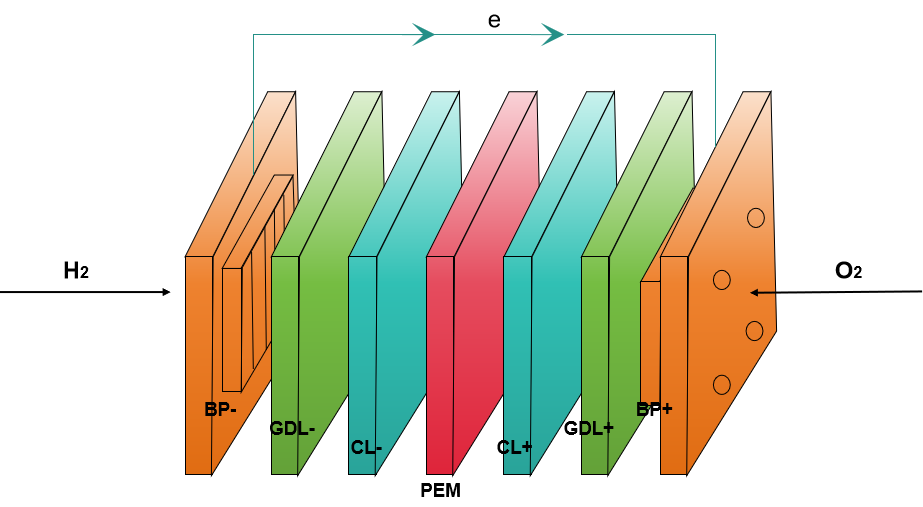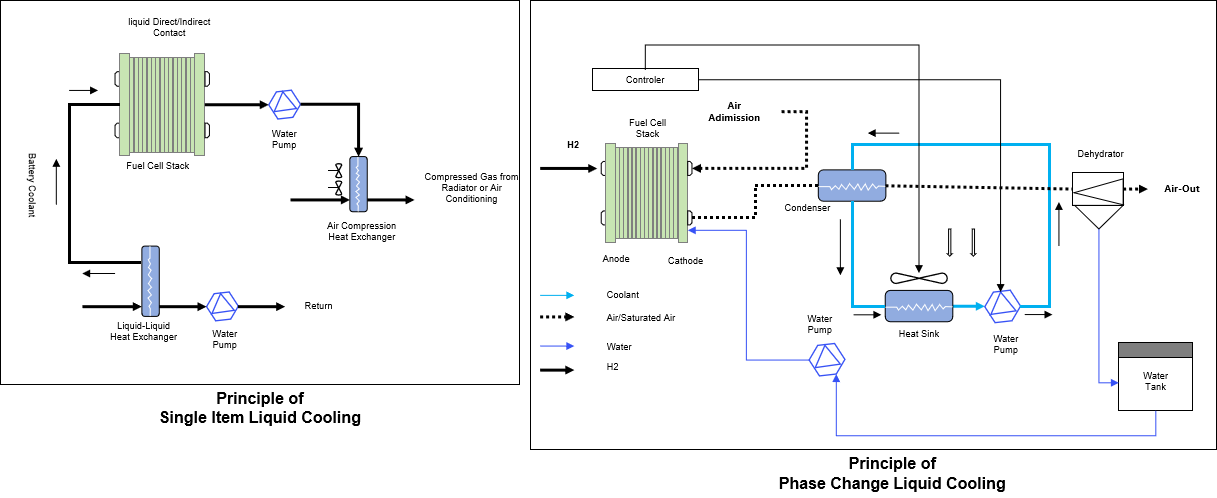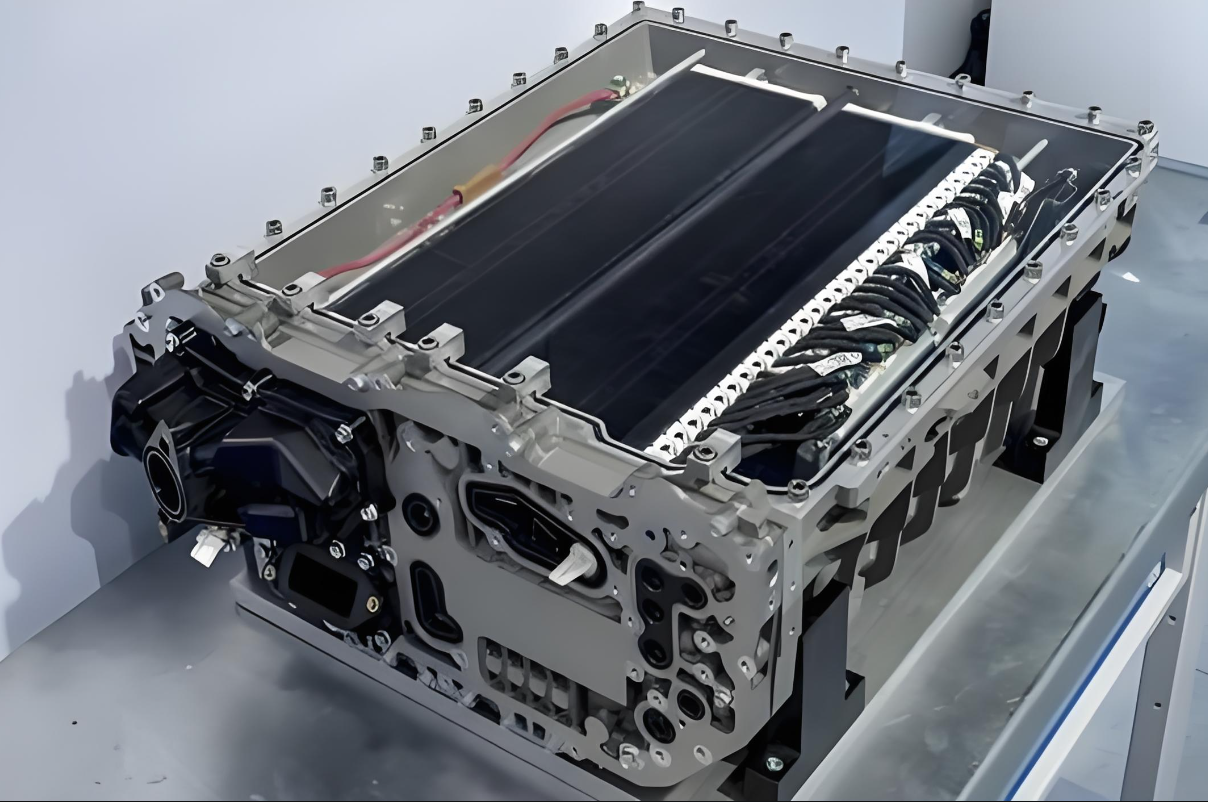
Communication and sharing promote growth
Joining Hands for Development!

Abstract:Hydrogen fuel cells, also known as proton exchange membrane fuel cells (PEMFCs), are widely used in electric vehicle charging stations, automobiles, and other power generation facilities due to their advantages of high efficiency, zero emissions, and zero pollution. Hydrogen fuel cell vehicles emit 3-5 times more heat during operation than traditional fuel vehicles. This article briefly describes the current technology related to hydrogen fuel cell heat dissipation.
1-Working Principle of Hydrogen Fuel Cells
Hydrogen fuel cells release a large amount of heat during operation, among which electrochemical reaction heat accounts for about 55%, irreversible electrochemical reaction heat accounts for about 35%, Joule heat accounts for about 10%, condensation heat and various heat losses account for about 5%. The heat generated by hydrogen fuel cells is approximately equal to the electrical energy they generate. If not dissipated in a timely manner, the temperature inside the battery will significantly increase, thereby affecting its service life.

2-Hydrogen Fuel Cell Heat Dissipations
Compared to fuel powered vehicles, hydrogen fuel cell vehicles have a higher heat generation and a more complex system. At the same time, due to the limitation of the working temperature of hydrogen fuel cells, the temperature difference between hydrogen fuel cells and the outside world is smaller, making it more difficult for the heat dissipation system to dissipate heat. The working temperature of hydrogen fuel cells has a significant impact on fluid flow resistance, catalyst activity, stack efficiency, and stability, thus requiring an efficient heat dissipation system.

Liquid cooling technology is currently the mainstream technology in the application of hydrogen fuel cells in vehicles. It aims to reduce water pump power consumption by reducing system pressure drop, eliminate excess heat in hydrogen fuel cells with the lowest power consumption, and optimize the distribution of circulating working fluid flow channels to reduce internal temperature differences and improve the uniformity of battery temperature distribution.
90% of the heat generated in hydrogen fuel cells is eliminated by the heat dissipation system through thermal conduction and convection, while 10% of the heat is dispersed to the external environment through radiation heat dissipation. Traditional heat dissipation methods include air cooling, liquid cooling, and phase change heat dissipation.
3-Heat Transfer of PEMFC System
3.1 Stack Heat Transfer
After heat is generated inside the PEMFC, it will be transferred between the various components inside the PEMFC and the external environment. The heat transfer inside the fuel cell stack mainly depends on the thermal resistance of each component and the contact thermal resistance between different components. As the gas diffusion layer is the "bridge" connecting the main heat generation component (membrane electrode) and the main heat dissipation component (bipolar plate), its thermal resistance and the size of the contact thermal resistance with other components have a significant impact on the heat transfer performance inside the PEMFC. In addition, the contact thermal resistance between different components can have a significant impact on the internal heat transfer of the fuel cell stack.

3.2 Cooling Liquid Heat Transfer
The cooling methods of fuel cells include air cooling, liquid cooling, and phase change cooling.
The factors that affect coolant heat transfer include the PEMFC stack end, the coolant itself, and the radiator end. The coolant comes into direct contact with the bipolar plate at the end of the PEMFC stack, so the coolant flow channel structure has a significant impact on its heat transfer. In addition, the properties of the coolant itself can also affect the related heat transfer process. Considering the insufficient available space, choosing a coolant with a larger heat capacity can reduce the size of the radiator and improve the thermal management performance of PEMFC. Therefore, the demand for new high-efficiency coolants is becoming increasingly evident.